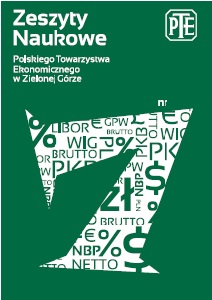Structure and dynamics of the economy (Russia’s case). Evaluation of the economic forecast
Structure and dynamics of the economy (Russia’s case). Evaluation of the economic forecast
Author(s): Vladimir Davydenko, Gulnara Romashkina, Daria LazutinaSubject(s): Economy, National Economy
Published by: Polskie Towarzystwo Ekonomiczne w Zielonej Górze
Keywords: GDP; forecast;development;
Summary/Abstract: The research of this article is reinterpretation of the role of the Russian federal budget in the implementation of socio-economic policy of the country. Research question is based on the premise that a key moment of political and intellectual agenda is the future economic growth of the country, its quality, its sources and its progress rate. This article analysis the forecast of Ministry of Economic Development of Russia in the 2017-2019 (three scenarios – a basic, basic+ and target). The main idea is that the GDP growth rate (from the basic scenario) is too high and too optimistic: 2%. Neither the Economic Development Ministry, nor the Ministry of Finance of the Russian Federation explain such high rate. According to Rosstat, the 1Q 2017 GDP growth rate was only 0.5%. Current budgetary policy of cuts and accumulation of reserves leads to stagnation. The correlation analysis of the main components of the GDP were conducted (for the period 2006-2019). It turned out that the most important factor determining growth is internal consumption. The decline in real disposable income leads directly to the decrease in food and nonfood products sales. The reducing of income goes along with increasing of socio-economic differentiation. According to the data of Russia's budget for 2017-2019 years, there has been a decline in the share of spending on public administration, defense and public order in favor of the sectors that form the preconditions of growth. Russia falls into the trap of "long crisis". At low rates of economic growth, the state and society’s resources are not enough to solve important social problems, to reduce poverty and to develop the infrastructure. There is not enough resources for technological production modernization. It influence a gradual loss of technological capacity, human capital, competitiveness decline, the ruble’s exchange rate, and the destabilization of the payments’ balance.
Journal: Zeszyty Naukowe Polskiego Towarzystwa Ekonomicznego w Zielonej Górze
- Issue Year: 4/2017
- Issue No: 7
- Page Range: 97-119
- Page Count: 23
- Language: English

